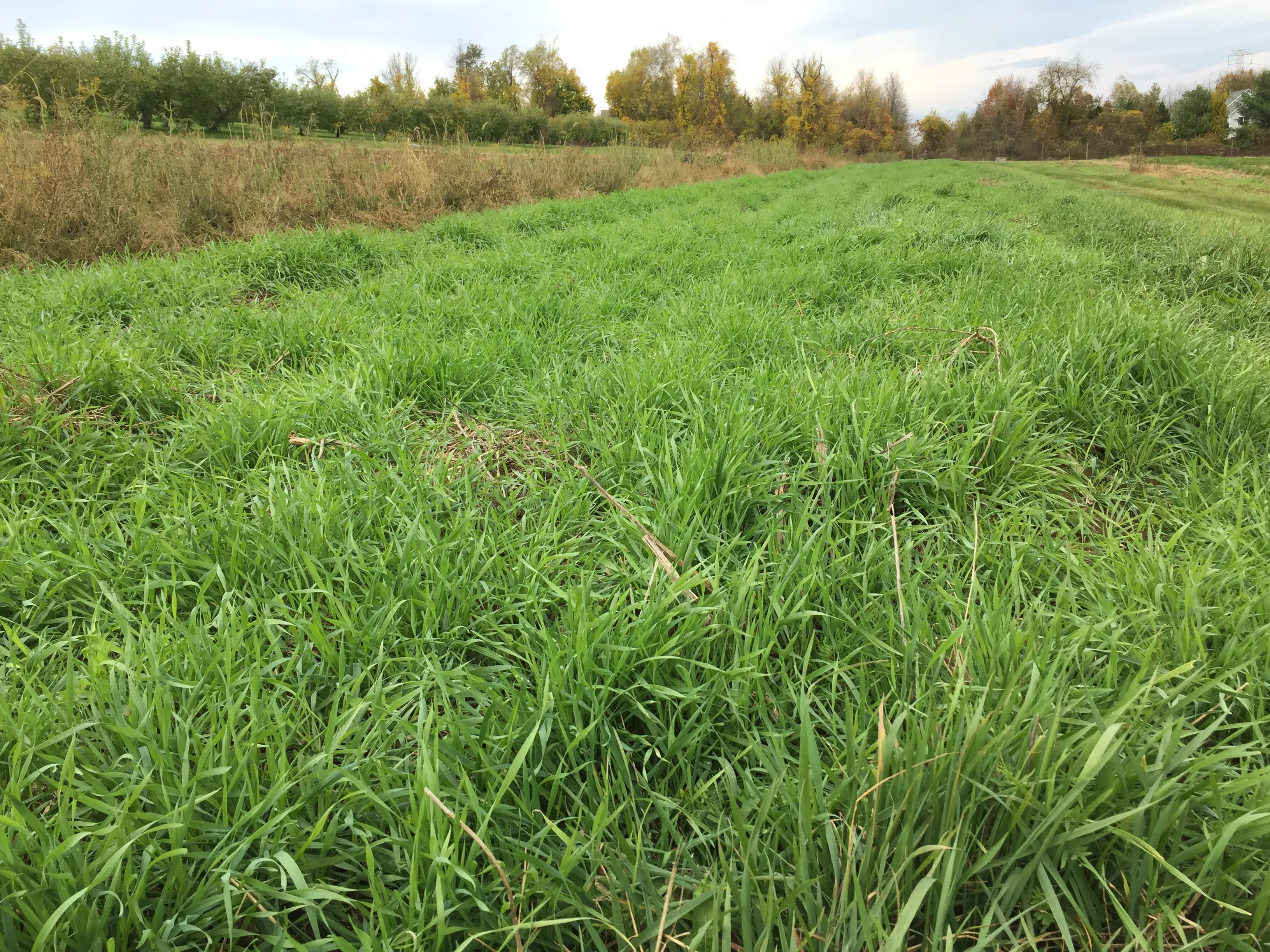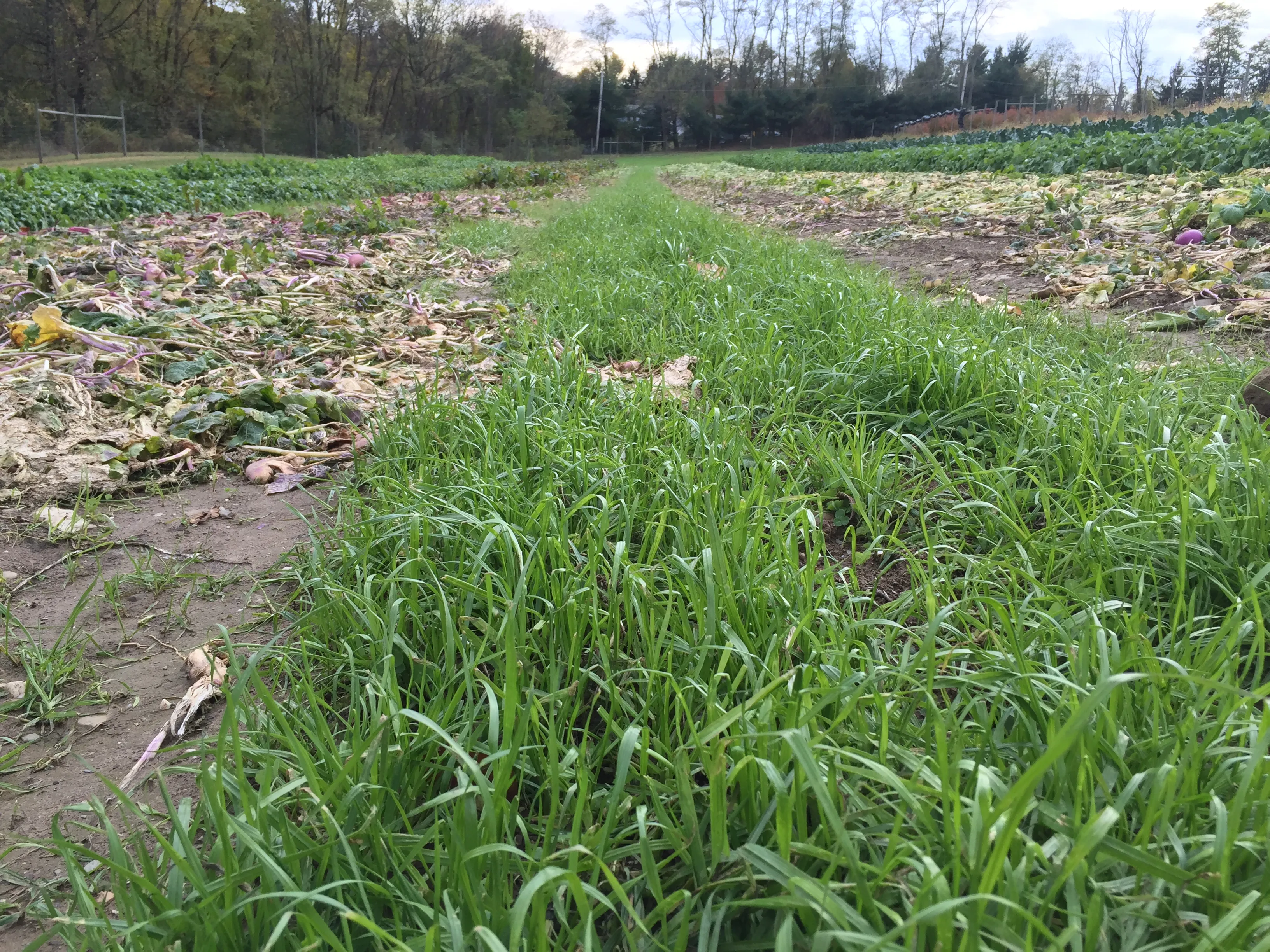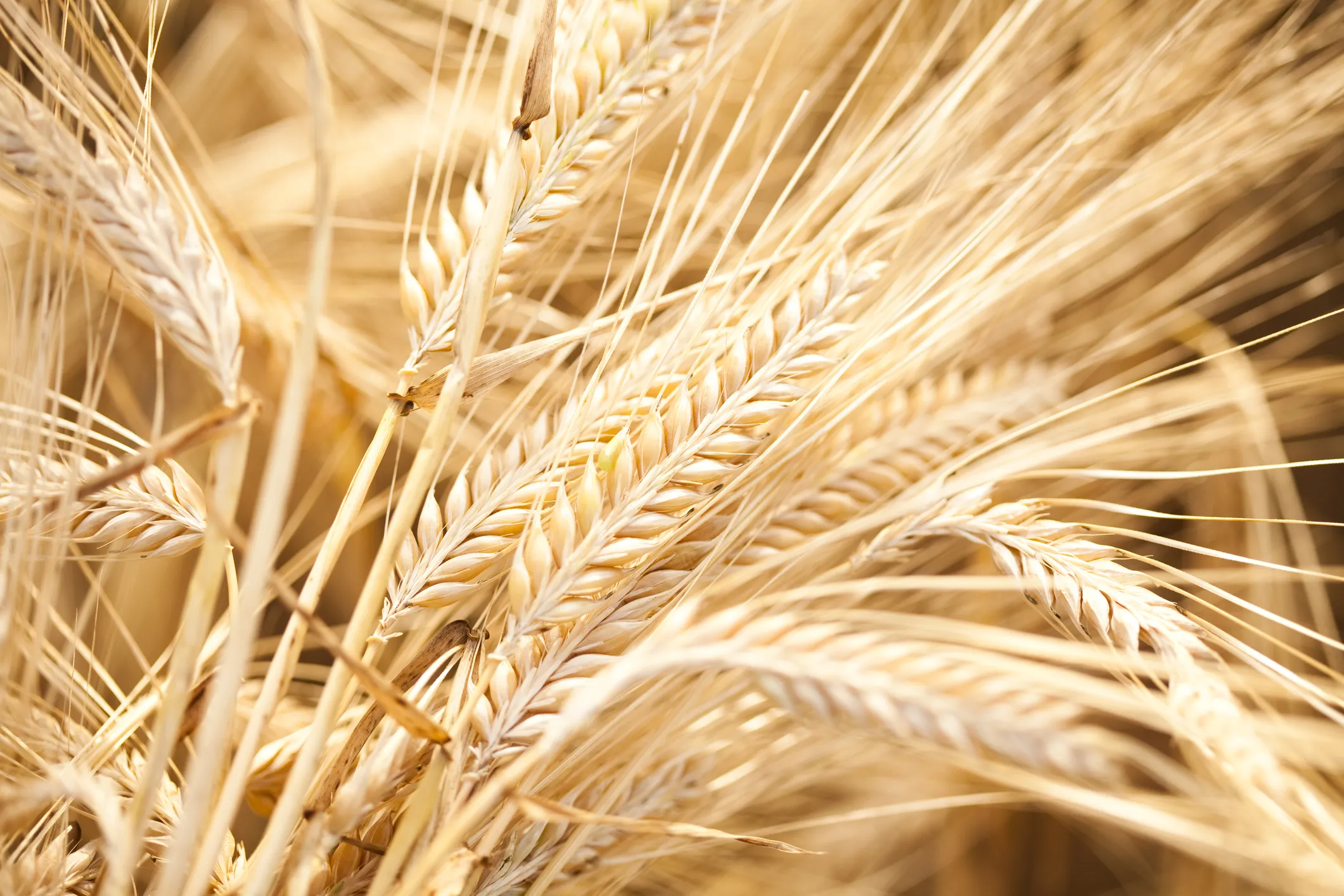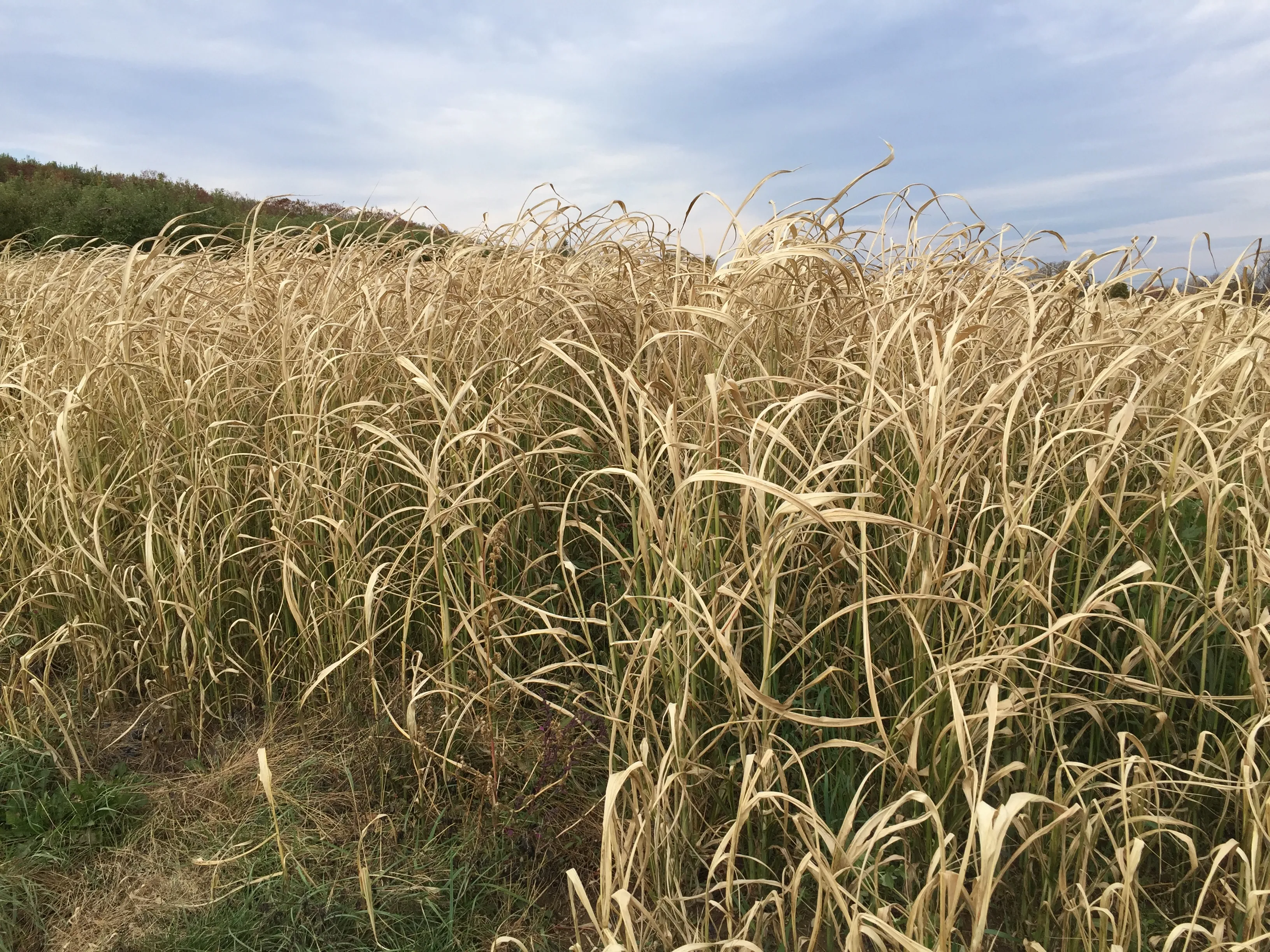Cover Crop Series: Top Performing Grasses
Photo Credit to Lauren Kaplan
In the last post, we
looked at legumes and how their ability to fix nitrogen makes them vital to most cover cropping
systems. In the quest for sufficient nitrogen, grasses and cereals play a different, but similarly
vital, role. Here we will look at a few of the most broadly regionally-appropriate grasses, whose
popularity (see
Chart 1) is an indicator of their many strengths.
Grasses are well known for being excellent nitrogen scavengers, capturing residual nitrogen after
harvest. Left in the soil, this nitrogen is fairly mobile and liable to be lost to leaching or
denitrification during wet winters. (Read more about N cycling in agricultural systems at the
Universities of Minnesota
and Delaware
extensions.) As adept nitrogen fixers, most legumes do not need to be much good at scavenging
nitrogen. Grasses, on the other hand, can scavenge and hold residual nitrogen like champs.
Grasses can also work wonders for your soil tilth. Most have vigorous root systems, composed of
both fine, fibrous surface and deep tap roots. As anyone who has ever tried to pull up a stand of
mature grass can attest, dense root mats make grasses adept at minimizing erosion and suppressing
(other) weeds. Lots of roots means lots of root exudates, and lots of organic matter (and channels
for air and water infiltration) when those roots break down.
CEREAL RYE

-
Benefits: Across the board, cereal rye is one of the top five species when it comes to suppressing weeds, combating pests, controlling erosion and building soil. It is excellent at catching and scavenging nitrogen, and generating plentiful biomass. Perhaps its most admirable characteristic, for anyone who struggles to get cover crops in on time, is that it can be planted late (into mid-winter in some regions) and will not winterkill.
-
Growth: Cereal rye is an upright annual cool-season grass that tolerates moderate shade and rocky, low-fertility, and acid soils. Most cereal rye cultivars do not do well in excessive moisture, preferring drought to sodden soil (although there are some varieties that are more tolerant of wet conditions).
-
Other Factors/Challenges: Rye’s vigorous spring growth generates a lot of biomass, but it also means the crop can get away from farmers, thus hindering the warming and drying of the soil. Mature rye can also be difficult to incorporate. Both factors can make spring tillage a challenge, and could compromise your ability to get cash crops in on schedule.
ANNUAL RYEGRASS (ARG)

-
Benefits: Like its cereal cousin, annual ryegrass is a top-notch weed suppressor, soil builder and scavenger of nitrogen. ARG is more adept than cereal rye at breaking up deeply compacted soils, and can better tolerate wet conditions. Though still a top choice for late planting, ARG must be planted earlier and can winterkill in harsh conditions. If planted early enough, it is a vigorous competitor with late summer and fall weeds.
-
Growth: This winter annual is an upright, non-spreading turf or bunch grass. It uses a lot of nitrogen, and is not so tolerant of low-fertility soils as cereal rye. Plant with legumes and other grasses.
-
Other Factors/Challenges: ARG does not tolerate dry conditions, and is, therefore, a poor choice for areas suffering from drought. Cornell notes that germination can suffer in areas with considerable soil crusting. Finally, ARG can easily become a weed if allowed to set seed.
BARLEY

-
Benefits: This quick-growing cereal is excellent at controlling erosion -- due in part to a vigorous root system. Barley is a superb suppressor of weeds, which it does both by outcompeting for water and releasing alkaloids and other allelopathic chemicals. This, and its ability to contribute significant organic matter, make barley a good choice for weedy and overworked soils.
-
Growth: Barley does well in light, well-drained soils, performing in dry and alkaline soils better than many other cereals. With its quick and upright growth, barley is a good nurse crop for legumes and other small grains.
-
Other Factors/Challenges: A fully mature stand of barley can be even more difficult to incorporate than rye. After turning in barley (and any cover crops that produce allelopathic compounds), be sure to leave an interval before direct seeding to allow these germination-inhibiting compounds to break down.
SORGHUM/SUDANGRASS (SUDAX)

-
Benefits: This widely adapted, hybrid grass is a top regional cover crop species for fighting pests, loosening subsoil, and building soil. It generates a lot of biomass quickly -- more per acre, and more cheaply, than all other major cover crops. It also generates allelopathic compounds to suppress weeds from crab- and barnyard-grasses to ragweed, pigweed and purslane.
-
Growth: Sudax is an attractive summer annual that grows fast, lush and tall,and is tolerant of a wide range of pH (from 5.0 to 9.0). Its preference for hotter weather means it is easily worked into rotations between spring and fall/winter crops and covers. Plant in warm soils and provide sufficient moisture to ensure a good stand.
-
Other Factors/Challenges: To increase its effectiveness as a subsoil loosener, mow stalks at 3-4 feet tall to significantly increase root mass and to encourage deeper root systems. If not winterkilled early enough, fully mature plants can become woody, leaving fibrous residue.
Grasses and cereal grains are valuable tools in sustainable agriculture systems, whether you are a
small farm or a larger operation. Across the board, they are excellent nitrogen scavengers, weed
suppressors and erosion minimizers. Most secrete allelopathic compounds, generate significant
biomass, are good soil builders, and can serve as good forage or nurse crops for their fall-seeded
legume companions. All of these qualities make grasses and cereals a valuable addition to your cover
crop mix.
Helpful Links:
Cornell Cover Crop Guide: http://covercrops.cals.cornell.edu/annual-ryegrass.php
UMN Extension: http://www.extension.umn.edu/agriculture/nutrient-management/nitrogen/understanding-nitrogen-in-soils/
SARE Managing Cover Crops Profitably, Overview of Non-Legume CC: http://www.sare.org/Learning-Center/Books/Managing-Cover-Crops-Profitably-3rd-Edition/Text-Version/Nonlegume-Cover-Crops
If you liked this article, and want to see more like it, enter your email in the subscribe box to the top-right of this page and we'll send you new blog articles as we publish them.

After graduating from UCSC's
Center for Agroecology and Sustainable Food Systems, Lauren Alexandra Kaplan spent a season at
an organic CSA farm in California before returning east to farm in the Hudson Valley. Prior to
pursuing farming full time, she worked in book publishing and helped to launch an urban farm in
NYC. Alexandra is an avid salsa dancer and maker of jams, pickles, and kraut.